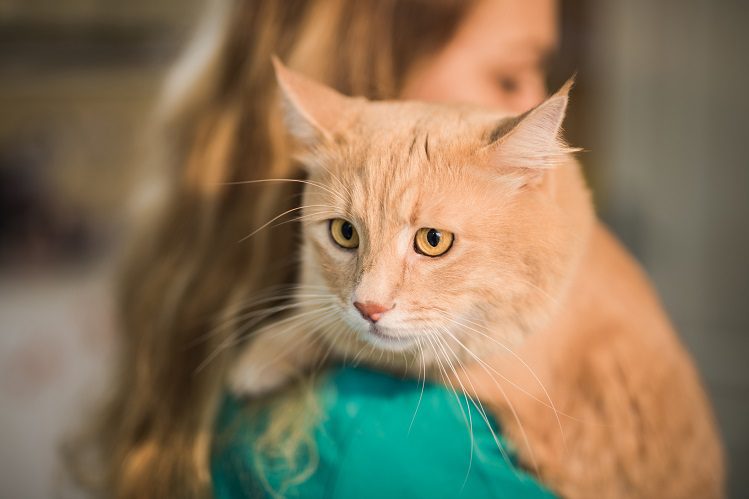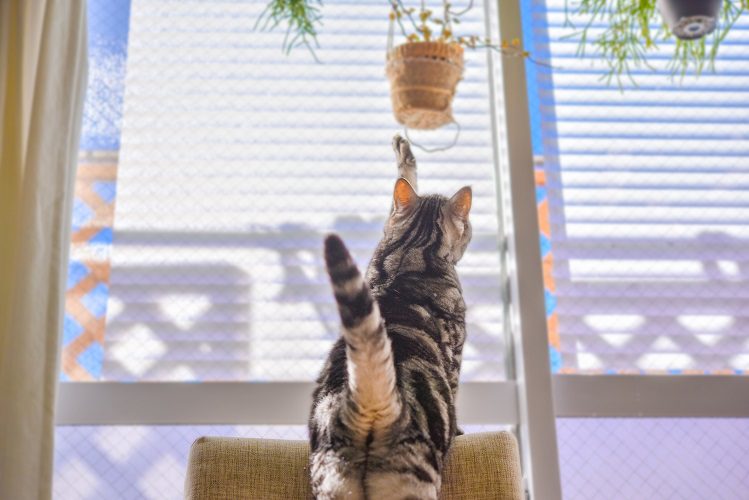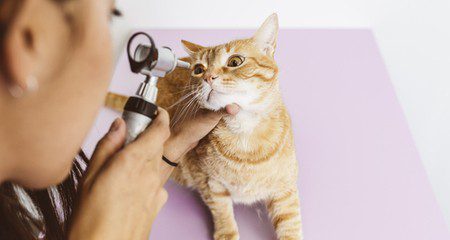
Cat in the house: educate or negotiate?
Often cats do not behave the way we would like. We expect the pet to lie in a ball on our lap and purr softly. But instead, the mustachioed-striped one prefers to sharpen his claws on furniture and sit on the dining table. And he wants to talk with you mostly in the morning, at four o’clock. But this is no reason to give up. The behavior of a pet can be corrected, the main thing is to look at the issue from the point of view of the cat itself and understand why it behaves the way it does.
The basic rule of effective raising cats is to ignore the negative, reinforce the positive. We are accustomed to perceive ignoring as something with a minus sign. But in the case of a fluffy ward, it is about not focusing on the bad, not motivating the pet to misbehave further.
Imagine a situation. You are busy all day, the cat is left to himself. But as soon as he starts meowing or biting your legs, you are ready to drop everything and pay attention to the cat. And it doesn’t matter what kind of “attention” this will be: an angry tirade or a fresh treat. The cat wanted your attention – and you pecked at this bait. “It worked!“, — assimilates the cat. The next time he lacks attention, he will again begin to play pranks, because last time this is how he got what he wanted. So the owners, unwittingly, reinforce the negative behavior of the pet.
There is no point in a violent reaction to undesirable behavior, angry tirades, and even more so punishments. Cats will not understand what you want from them. Punishment does motivate cats not to trust you and to misbehave mainly when you are not around.
What about positive reinforcement? It is troublesome, but it brings valuable results. Whenever your pet is behaving well, give him a treat and praise. Even if the cat is not doing anything special. Does he not chew flowers, does not throw your things off the nightstand, does not meow every five seconds, but just sits quietly next to you? Great, she’s done well, it is precisely such calm behavior that needs to be reinforced with a treat. We’ll have to leave things for a minute, get a treat and give it to the cat. Hurry up before she gets naughty again. This is the method of positive reinforcement.
A good choice of treats for the cats whose behavior you are going to work on is very important. Positive reinforcement works when the cat really enjoys the treat. Try several types of treats and see which one makes your ward the most enthusiastic. It is convenient to choose a treat in the form of small pieces so that the cat has time to eat it quickly and fix it for itself: “Here it is, the moment when I do everything right and when I am rewarded«.

To understand your pet, you need to learn their body language. There are many books and articles on animal psychology that will help you with this. In order for communication with the ward to be harmonious, you need to read these signals. Let’s take an example. The owner mechanically strokes the cat, thinking about something else. And the mood of a furry friend can change in a few seconds. If the owner had not hovered in the clouds, they would have noticed that after five or six strokes, the cat asked him to stop using body language. The cat purrs, looks back at your hand, strains its ears, twitches its skin – and this is a sure sign that it is no longer necessary to touch it. Do not hold the ward in your arms if he strives to leave.
Try not to force your pet to do something, but to motivate him to take steps towards you.
If a cat suddenly shows aggression, but you don’t see an explanation for this, you need to urgently show your four-legged friend to the veterinarian. Anyone will become irritable if something hurts. If the veterinarian, based on the results of examinations and tests, concluded that your ward is healthy, we return to behavioral issues. A good option would be to seek professional help from a zoopsychologist. Often the owners misunderstand the motives of the behavior of four-legged friends, therefore they make the same mistakes in education. The expert will be able to consider the picture of the relationship of the family with the pet as a whole and identify the problem.
Often the owners misunderstand the motives of the behavior of four-legged friends, therefore they make the same mistakes in education. The expert will be able to consider the picture of the relationship of the family with the pet as a whole and identify the problem.

The main cause of aggression may be background. For example, the constant noise of the railway near which you live. But something else could be the last straw in the cat’s patience.
Often there is redirected aggression. The cat is afraid of something that she is afraid to resist. Therefore, he takes out the negative on someone whom he is not afraid to scratch or bite. The cat cannot leave the country house, because the huge neighbor’s dog will bark at him in the yard. But from stress and fear, he may well allow himself to cling to your leg with his claws. You have nothing to do with it, just a cat got into a stressful situation, and you were nearby. Such moments are recognized by a zoopsychologist.
A pet behavior specialist will tell you how to raise your cat without losing her trust.
Take your pet’s aggression seriously and don’t take it as a game. Aggression always has a reason. Such behavior needs to be corrected, and preferably after one or two incidents.
Often cats are addicted to vandalism out of boredom, lack of attention and curiosity, the desire to explore the world. What looks like bad behavior on your part is just the satisfaction of natural needs for a cat. Consider whether you provide your cat with sufficient emotional and physical activity.
Your task is not to prohibit, but to offer a safe alternative to a four-legged friend who seeks to throw out excess energy.
Cats need to hunt, get new experiences, communicate with their owners. Walk your cat on a harness, watch entertaining videos with other cats and kittens together, many cats enjoy watching films about wildlife. The game will help to satisfy the hunting instinct. Offer your pet different types of toys. Puzzles with treats inside, teasing rods with feather tails, toys with rustling catnip filling so that the mustachioed can arrange a fight without rules.
Puzzles with treats or pieces of dry food inside are extremely beneficial for cats. They occupy them for a long time, make them smart, make them feel like a getter. And such educational toys teach the cat to eat moderately and eat slowly. For the sake of each piece of food you have to work hard, so the meal stretches for a long time. Experts especially recommend giving such useful toys to pets who have gained a couple of extra pounds.

People often complain that all life has turned into Groundhog Day, one day is similar to another. For cats, it’s exactly the opposite. Stability and a clear schedule of feeding, games – that’s what they need. This is the kind of “Groundhog Day” they expect from you.
It happens that a cat strives to bite, shows negative character traits only because your work schedule has changed. You used to come at seven, feed her, play. And now you come back at 11 o’clock. The cat is disoriented.
Create a clear daily routine. Let games and feedings always be at the same time. This predictability of events makes cats feel secure. When a cat is happy with life, she no longer wants to be naughty so much.
Incorporate a special trick into your daily routine that will ensure your cat has a healthy sleep without meowing in the wee hours. Closer to the time when you yourself go to bed, play outdoor games with the cat, and then feed it properly. A running and full pet will snore sweetly on the couch, and not wake you up at an inopportune hour.
Consistency should also show up on your part in training your pet. If a cat is not allowed on the dining table, then it is always not allowed there. Prepare plastic napkins pasted over with double-sided tape. And have all family members put them on the table when not in use.
If your cat constantly meows, always show that you do not approve of such behavior. Train your pet. During the intermissions in the cat concert, let’s have a treat. Gradually increase the amount of time your cat needs to be silent in order to get a treat. After one or two months of training, the cat will behave in a completely different way.
Why does it take so long to teach a cat positive behavior? Because cats are conservatives. Even if you took her from a shelter, provided care and good food, don’t expect quick gratitude. The pet needs about a month to adapt to the new home and establish contact with new owners.

So that the cat does not have reasons to misbehave, life in the house should meet its needs. Eliminate all stressors that you can control.
First of all, the cat in the house should have its own safety zone, that is, a place where the cat can sleep peacefully, relax alone when she wants to. A tiny place to sleep under the bed will not work. It is better to arrange a safety zone where the cat will have a view. If such a place cannot be found, create it artificially. You can install a multi-level play complex for cats and agree with relatives that no one disturbed the resting pet.
It happens that stress in a cat is provoked by a conflict with one of the family members. Maybe one of your loved ones constantly violates the personal space of the cat or scolds her? Explain to your family that such a line of behavior will not lead to anything good.
Help your cat keep his interest in life. Once a week, change the set of toys that surround her. You can store toys that your pet doesn’t need right now in a container of catnip. If your cat is one of those who are not indifferent to catnip, such a trick will help increase the interest in the game.
The most important thing is not to close your eyes to the problems in the pet’s behavior. The sooner you start constructive work on behavior correction, the better the result will be. Be patient and help your four-legged friend become better. We wish you and your pets strong friendship and mutual understanding!





